
© Paul Kolnik. (Click image for larger version)
New York City Ballet
Works By Balanchine, Martins, Peck and Wheeldon: Ash, After the Rain (excerpt), The Infernal Machine, Tchaikovsky Piano Concerto No. 2, The Most Incredible Thing
★★★✰✰
Washington, Kennedy Center Opera House
1 March 2016
www.nycballet.com
www.kennedy-center.org
The first of two mixed programs that New York City Ballet presented at the Kennedy Center Opera House in March offered a wide variety of works, from an assortment of short ballets by Peter Martins and Christopher Wheeldon to a Balanchine masterpiece, and a new piece by the company’s resident choreographer Justin Peck.
Peter Martins’ Ash (1991) takes its title – and its inexorable energy – from the propulsive score by Michael Torke, the composer with whom Martins had collaborated on many occasions in the past. Over the course of the dance, five couples test their stamina and determination. They never have a moment of respite, appearing on and disappearing from the stage in a rush of constantly shifting geometrical formations, their movements rapid, sharp-edged and intense. It is a strenuous marathon – a non-stop exercise, stripped of any emotional depth and color, in which one rigorous ensemble gives way to the next, all fueled by the ever-escalating power of the music.
On opening night, the wonderful cast managed the seemingly impossible. The dancers brightened up the material, instilling the choreography with a cheerful exuberance. Dancing with irresistible vigor and sparkle, the ensemble, led by Ashley Laracey and Taylor Stanley, gave this dark and dense athletic romp its very own irresistible charm.
An excerpt from After the Rain, a fluid (and overly sentimental) duet created by Christopher Wheeldon to Arvo Pärt’s Spiegel im Spiegel, brought onstage the sublime Tiler Peck and Jared Angle. The pair glided thought this utterly melancholic and quite unremarkable offering, full of strange backbends and static poses, with remarkable conviction and a sense of purpose.
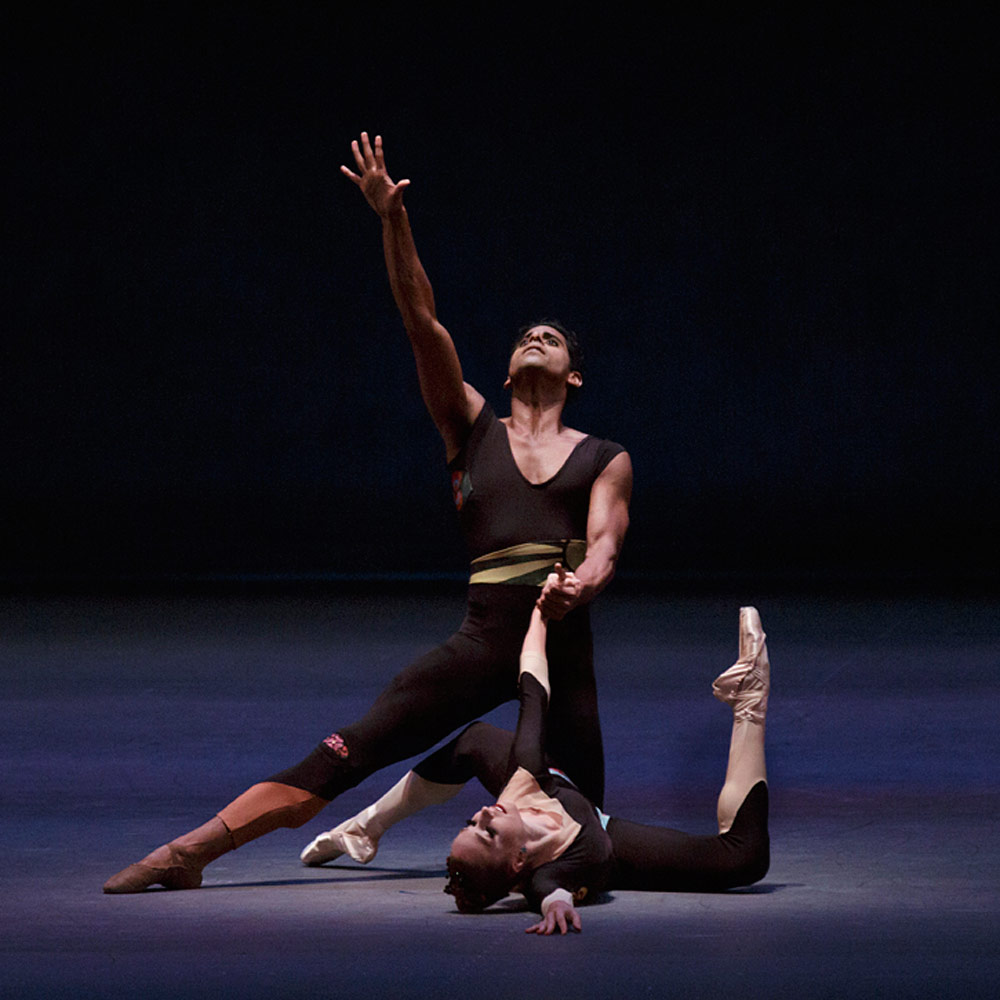
© Paul Kolnik. (Click image for larger version)
The brief pas de deux that followed next, The Infernal Machine, by Peter Martins, was anything but melancholic. A study in intricate and taut partnering, this effective duet, choreographed to the music of Christopher Rouse, received an assertive reading from Amar Ramasar and Ashley Laracey.
It’s ironic that the new ballet by Justin Peck is titled The Most Incredible Thing (TMIT). This was Peck’s first attempt at choreographing a story ballet. Featuring a commissioned score by Bryce Dessner and visuals and costumes by Marcel Dzama, this work was the most anticipated and advertised (it even has its own trailer) event of NYCB’s winter season at the David H. Koch Theater in New York. In fact, for many, TMIT looked to be the highlight of the company’s entire season; the 28-year-old Peck is deservedly considered one of the most exciting and promising voices in today’s ballet. When I saw the piece at the Lincoln Center in February, though, my first impression was that of disappointment – the ballet, however lavishly designed and outfitted, didn’t measure up to its promising title. The second viewing, here at the Kennedy Center, didn’t change my initial perception. In its current state, the ballet doesn’t come close to fulfilling its dramatic potential.
TMIT is based on a little-known tale of the same title by Hans Christian Andersen. On the surface, it’s a story about a king who offers half of his land and marriage to his daughter to anyone who creates the most incredible thing; but deep down, it’s a shrewd allegory, at its heart a battle between creative and destructive forces. Andersen distills the meaning of his story in just one sentence, “The spirit of art cannot be broken.”
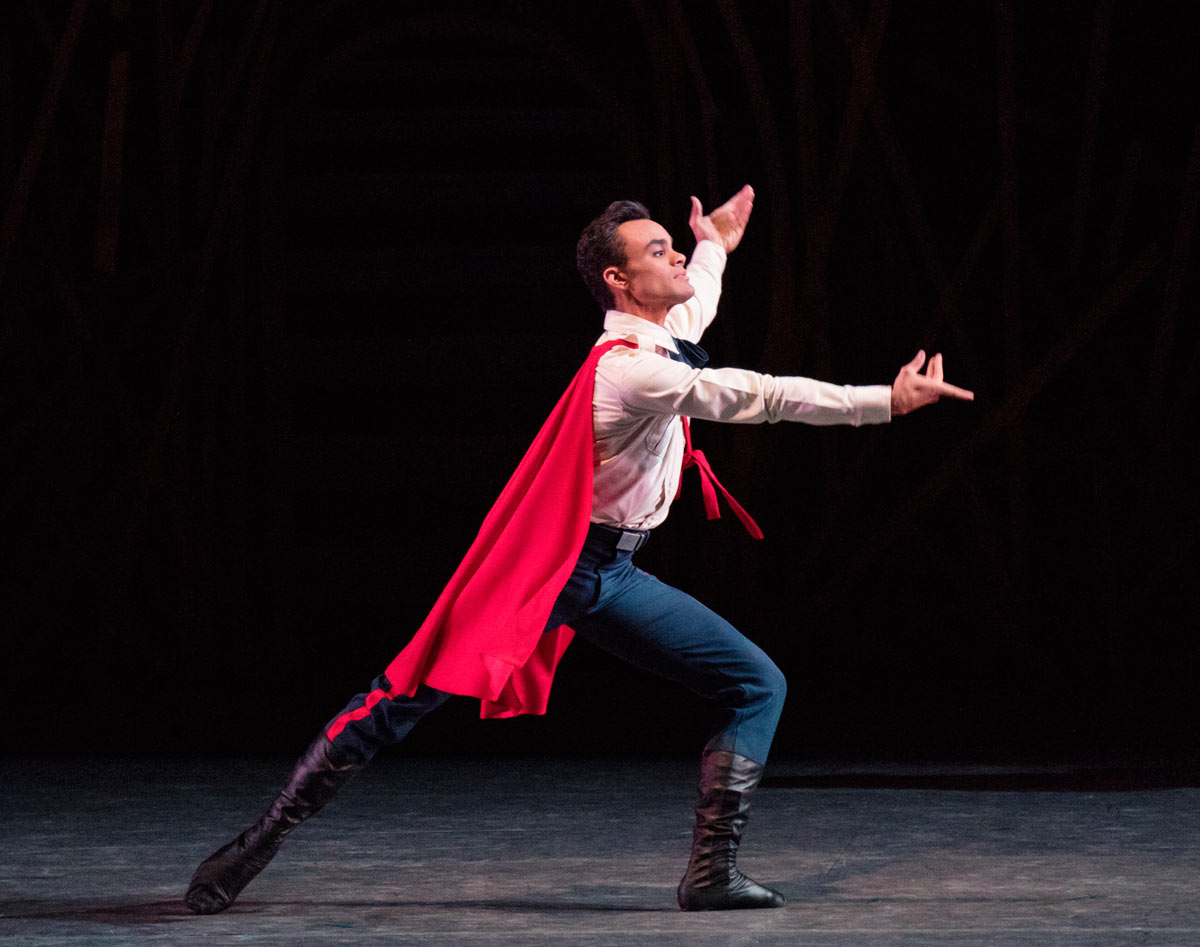
© Paul Kolnik. (Click image for larger version)
In Peck’s staging, there is little dramatic tension among the main personages: The Creator (a young man who invents a fascinating clock, which is proclaimed to be the most incredible thing), The Destroyer (an antagonist who smashes the clock into pieces and claims his victory and the right to marry the king’s daughter) and the Princess. These principal characters are too faintly defined and realized to be profound. The Princess seems to be ambivalent to either of the suitors, for there is not even a hint of a love story here; and the whole ballet turns into a cavalcade of divertissements of the assorted figurines (the Cuckoo Bird, Adam and Eve, the Three Kings, the Four Seasons, the Five Senses, the Gambler, the Seven Deadly Sins, the Eight Monks, the Nine Muses and the flock of children), who populate the magical clock and emerge from it on each hour that the clock strikes.
In the past, Peck proved himself a skillful master of ensemble choreography. Here, strangely, the group dances look rather generic and undistinguished. The visually striking, but for the most part bulky and cumbersome, costumes by Dzama and the unexceptional score by Dessner didn’t help. Even the outstanding cast that included Taylor Stanley (the Creator), Sterling Hyltin (the Princess), Andrew Veyette (the Destroyer) and Tiler Peck (the Cuckoo Bird) couldn’t make the difference – in all, the whole thing felt far less than incredible.

© Paul Kolnik. (Click image for larger version)
The program’s centerpiece, George Balanchine’s Tchaikovsky Piano Concerto No. 2, was undoubtedly the highest point of the evening. Choreographed nearly 75 years ago and premiered under the title Ballet Imperial, the ballet was reworked a number of times; the revisions entailed not only changes in the choreography but also simplifications of the original ornate costumes and scenery. “Our audiences these days don’t require elaborate costumes and decorations in a ballet, and rightly so. We see dancing better than we used to and prefer to see it directly, unencumbered. The music and the dancing themselves are enough here, I hope, to form illusions that scenery and costumes only made specific.” Thus Balanchine described his point of view, a credo of his mature career.
An example of exceptional choreographic richness, Piano Concerto No. 2 was as exhilarating and moving as it was fresh. Teresa Reichlen, in the principal ballerina role, danced with her unique quality of cool serenity and mesmerizing grace: a wonderful technician and a true poet, Tyler Angle was her attentive cavalier; Ana Sophia Scheller sparkled as the second ballerina and the corps de ballet never looked better. By and large, this was a truly memorable and utterly inspiring performance.













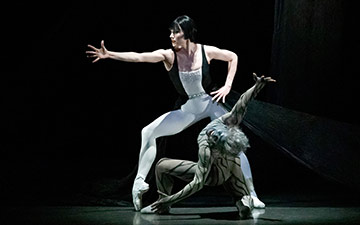
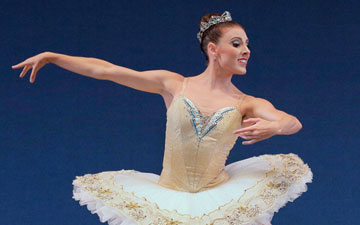
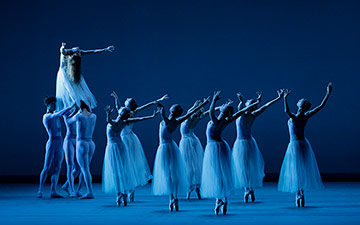

You must be logged in to post a comment.